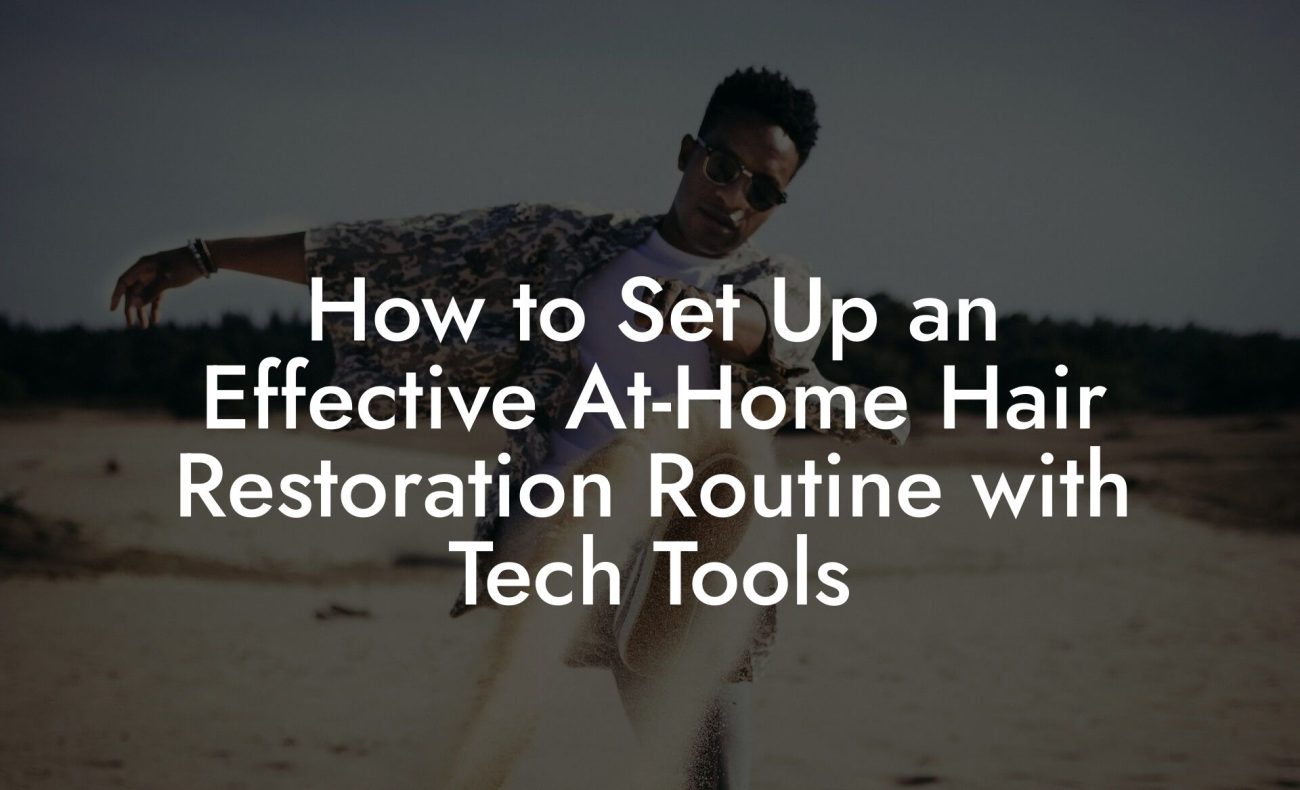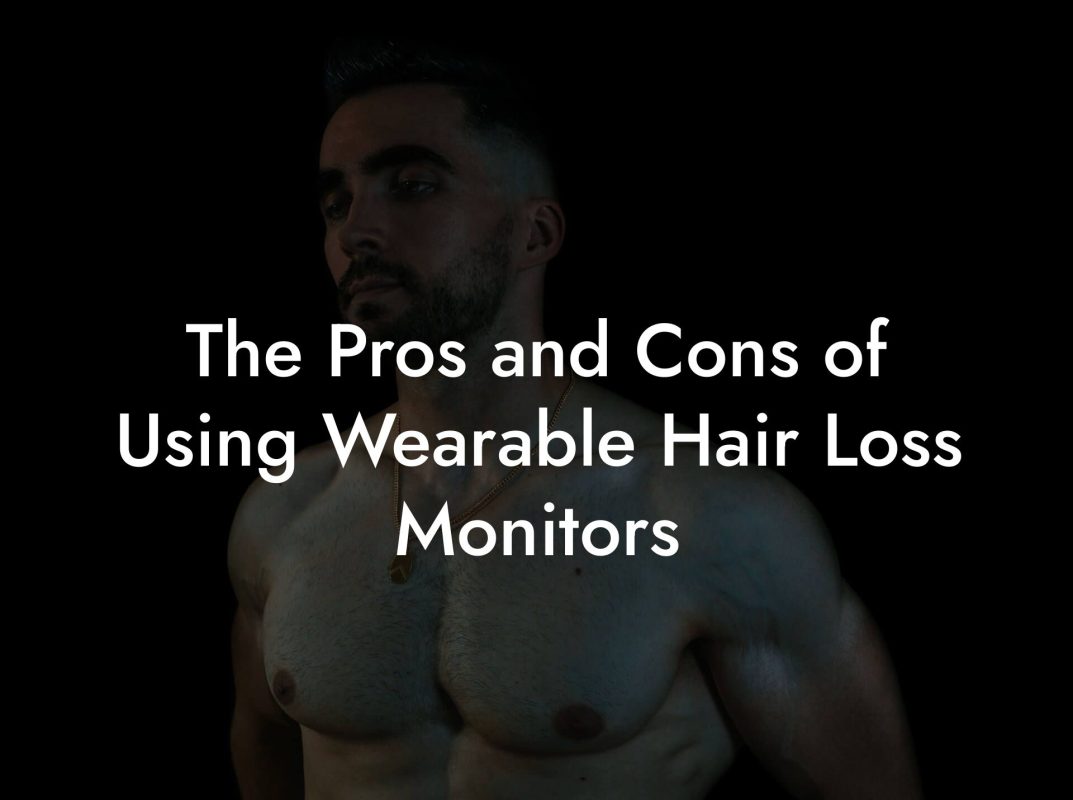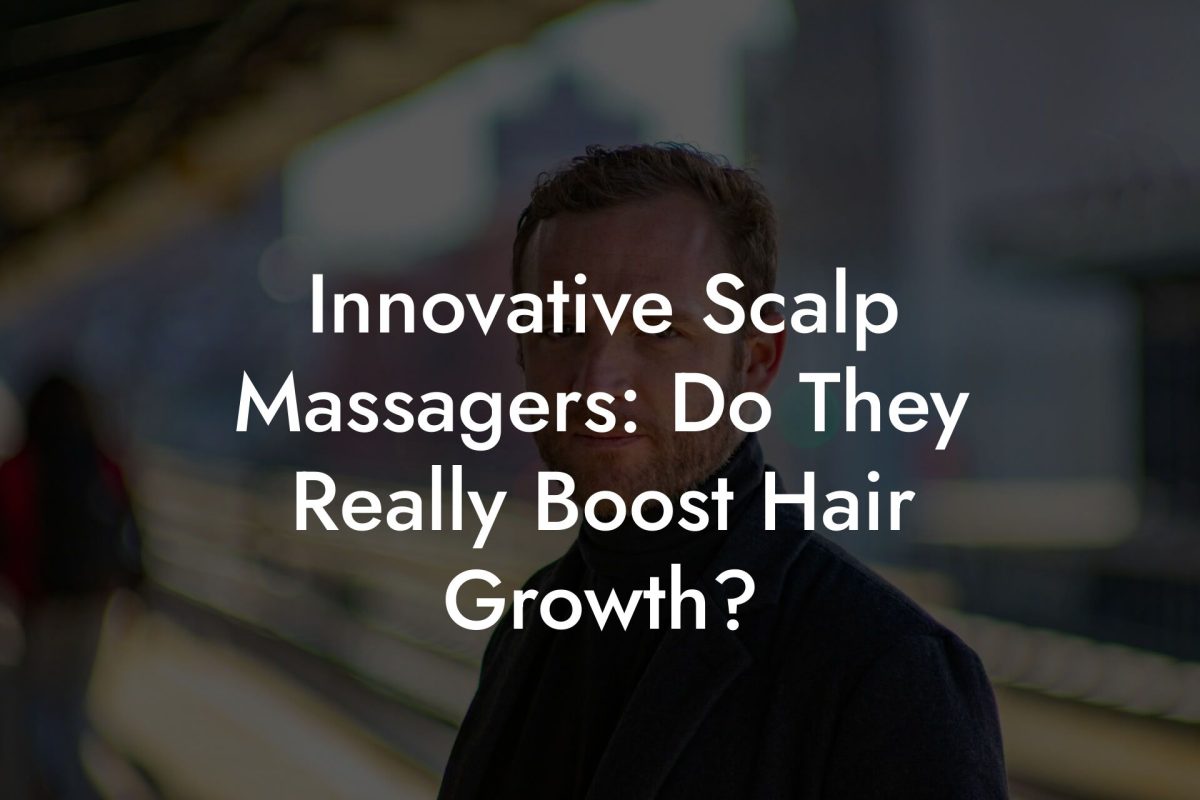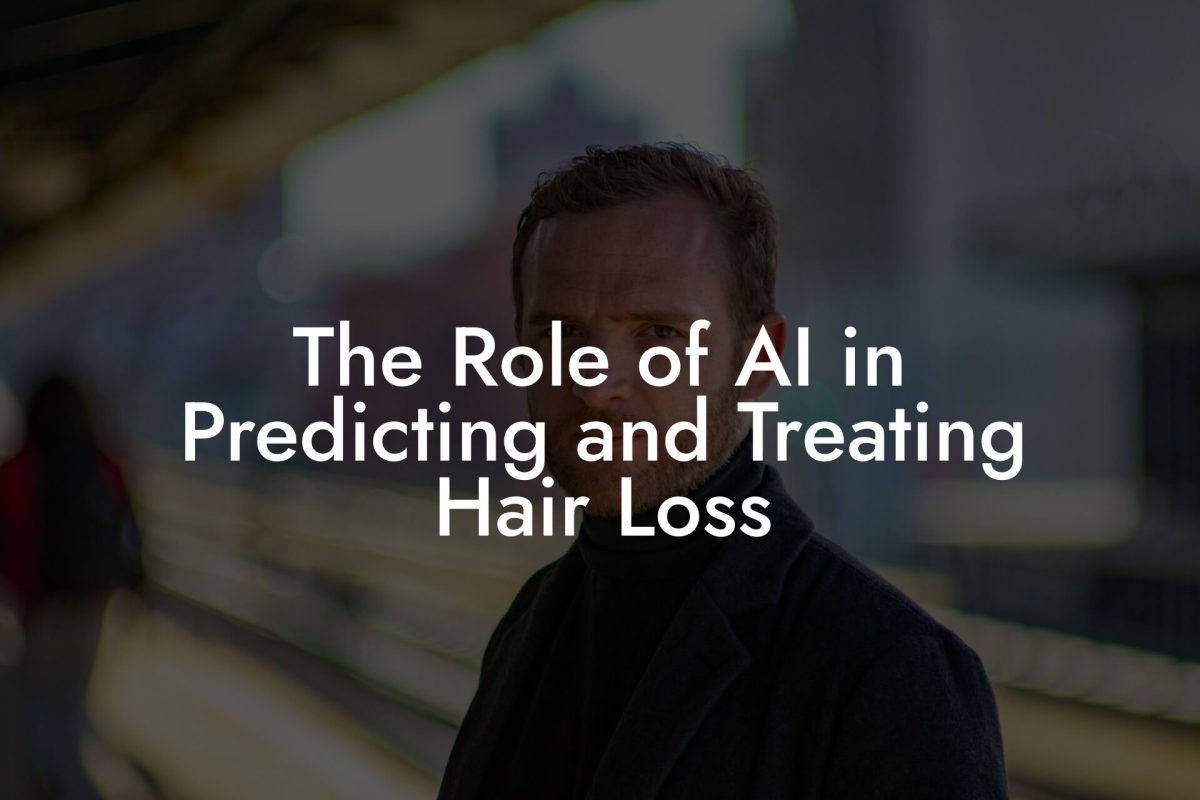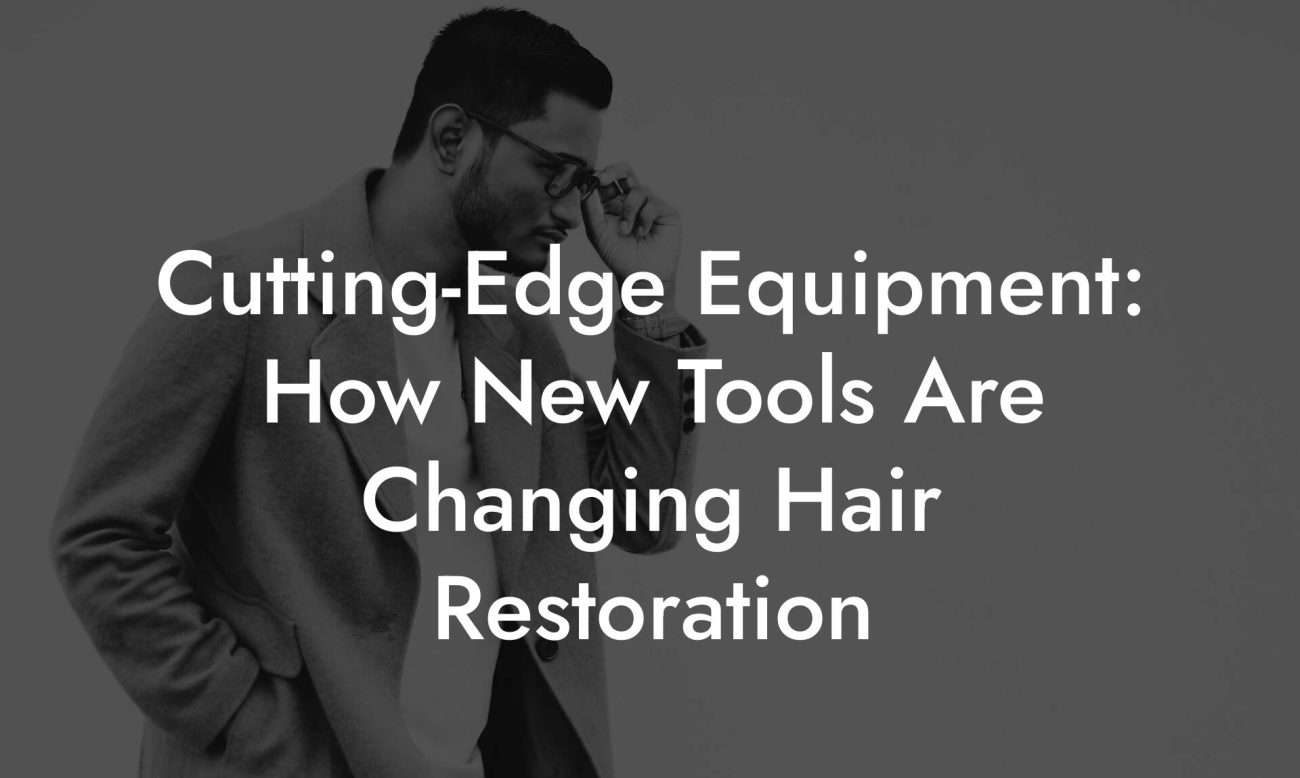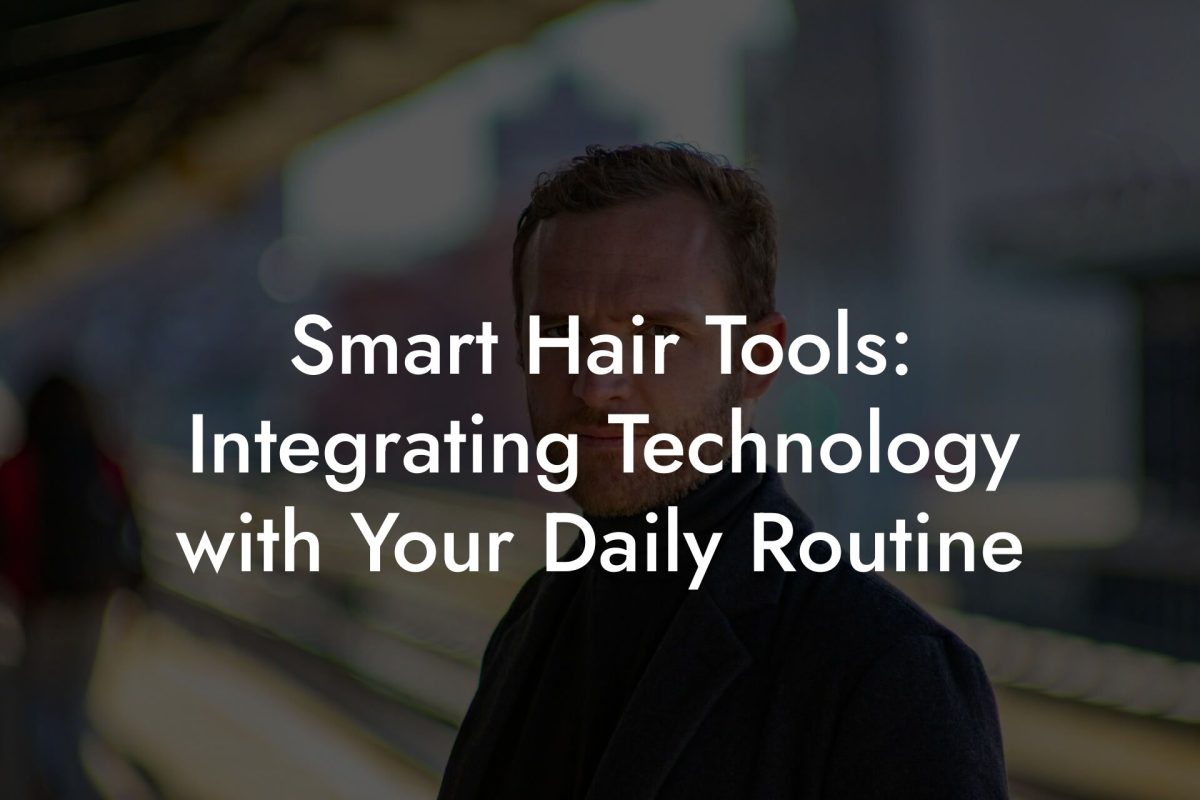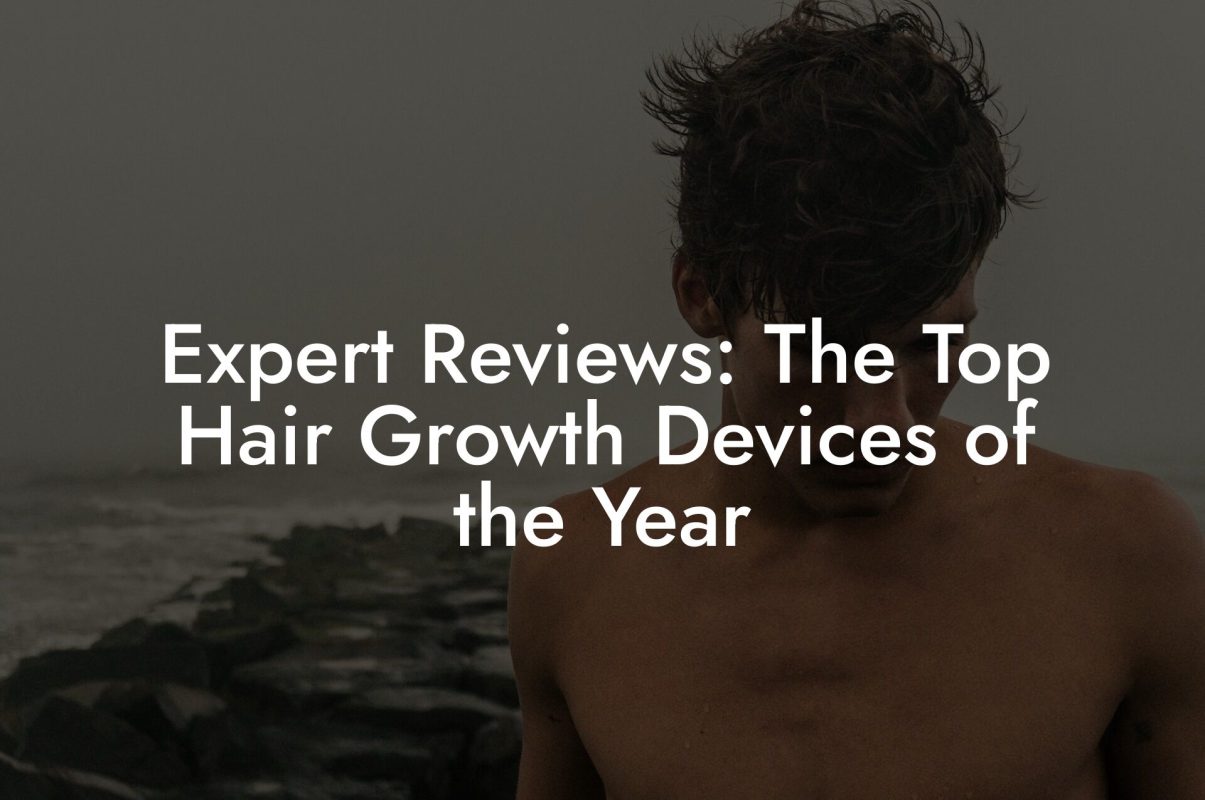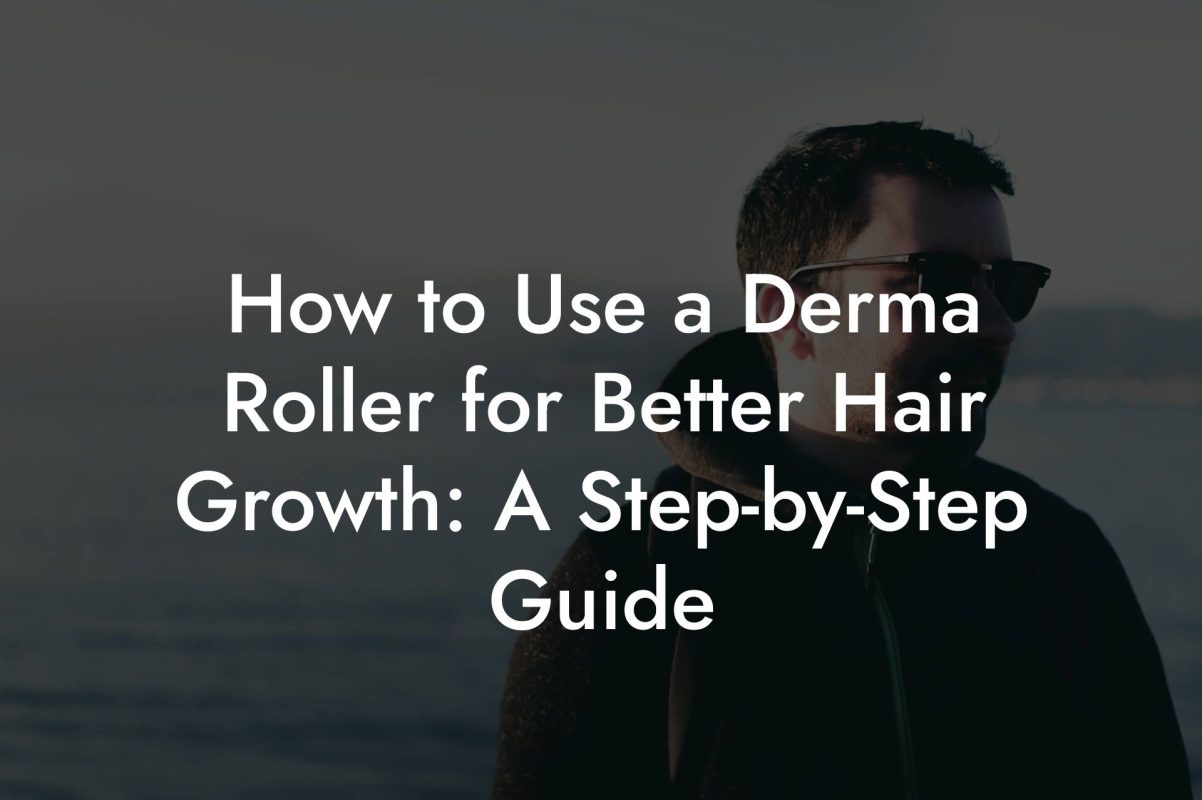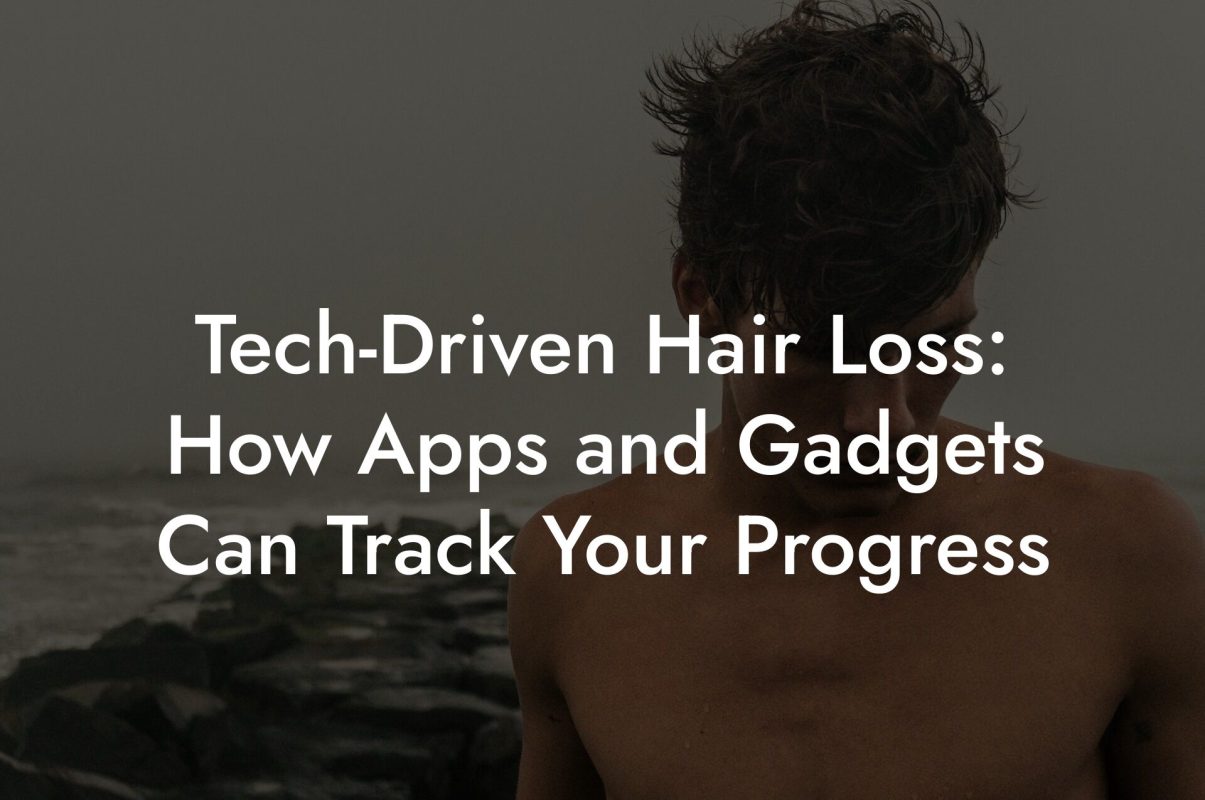Hair Loss Library
Understanding the Science Behind Phototherapy for Hair Loss

Ever wondered if your locks could use a little extra love from the futuristic glow of science? Welcome to “Understanding the Science Behind Phototherapy for Hair Loss,” where we dive headfirst into the world of light-based therapies that are turning heads and regrowing them too. Forget those awkward, expensive doctor visits—here at Mane Matrix, we believe in giving you the lowdown on hair loss solutions without the fuss, so you can reclaim your mane and your confidence.
What Is Phototherapy for Hair Loss?
Phototherapy for hair loss, also known as low-level light therapy (LLLT), is a cutting-edge treatment that uses specific wavelengths of light to stimulate hair follicles and encourage natural regrowth. If you’ve ever wished for a magic wand for your thinning hair, LLLT might just be the closest scientifically backed alternative—and without the unicorns and rainbows!
In simple terms, this therapy involves exposing the scalp to low-level red and near-infrared light. This energizes the cells, increases blood flow, and ultimately helps to wake up dormant hair follicles. The idea is that, by enhancing cellular activity, your hair follicles receive the support they need to kickstart the hair growth cycle.
Phototherapy can be done in specialized clinics or via handy at-home devices, making it an accessible option for men who prefer a discreet, cost-effective treatment over conventional medical consultations.
The Science Behind the Glow: How Does Phototherapy Work?
To understand phototherapy, let’s break it down to its core components. At the heart of this treatment lies the idea that light can trigger biological processes. But how exactly does this work when it comes to your hair?
Cellular Boost: The Role of Mitochondria
Your cells are powered by tiny structures called mitochondria, often dubbed the “powerhouses” of the cell. Think of them as the personal trainers of your body’s cells. When they absorb the red or near-infrared light during phototherapy, they produce more energy in the form of adenosine triphosphate (ATP). This extra energy is like giving your hair follicles a turbo boost—helping them grow thicker, healthier hair.
Increased Blood Flow and Nutrient Delivery
The light energy not only powers up the mitochondria, but it also stimulates the release of nitric oxide. This powerful molecule relaxes blood vessels, allowing more oxygen and nutrients to reach the hair follicles. The outcome is a revitalized scalp environment where hair can bloom.
Activation of Growth Factors
Another exciting part of the story is the activation of various growth factors. These are natural chemicals in your body that kickstart the process of cell repair and regeneration. By stimulating these growth factors, phototherapy helps transition hair follicles from the resting phase (telogen) into the active growth phase (anagen).
In short, phototherapy isn’t just flicking a switch—it’s an intricate dance of cellular rejuvenation that offers a scientific foundation for tackling hair loss.
Comparing Phototherapy with Traditional Hair Loss Treatments
You might be wondering how phototherapy stacks up against the more traditional options, such as medications or hair transplants. Let’s break it down with a bit of humor and a lot of facts:
Medications vs. Light
Medications like finasteride and minoxidil have been the go-to solutions for years. While they work for many, they can come with unwanted side effects and a repetitive, daily application routine that feels like a chore. Phototherapy, on the other hand, offers a non-invasive alternative that you can relax to while it works its magic.
Imagine charging your phone overnight—you set it down and let it do its thing. That’s essentially what phototherapy does for your hair follicles—with a bit more science and a lot less tangled cords.
Hair Transplants: The Invasive Counterpart
Hair transplants are like remodeling a house. They’re effective, but they’re also expensive, invasive, and require downtime. Phototherapy, by contrast, is non-surgical with minimal side effects, making it a welcoming option for those wary of needles and scalp surgery.
While the choice between treatments depends on individual needs and preferences, phototherapy uniquely positions itself as a comfortable, cost-effective method that merges cutting-edge technology with everyday accessibility.
The Benefits and Potential Side Effects of Phototherapy
Every superhero has its strengths, and phototherapy is no different. However, even the best treatments come with considerations. Let's dive into the pros and the potential “caution” signs.
Key Benefits
- Non-Invasive: No scalp incisions, no needles, just a gentle light session.
- Minimal Side Effects: Most users report little to no discomfort, and the risk of adverse reactions is remarkably low.
- At-Home Options: Mobile-friendly devices and DIY setups let you treat your hair loss in the comfort of your own space.
- Improved Scalp Health: Enhanced circulation and cellular activity can rejuvenate the scalp, creating a healthier environment for hair growth.
- Versatility: Suitable for various types of hair loss, including androgenetic alopecia, alopecia areata, and even chemotherapy-induced hair loss.
Potential Side Effects
While phototherapy is generally safe, a few potential side effects might crop up:
- Mild Scalp Irritation: Some users experience temporary redness or a slight burning sensation during the initial sessions.
- Temporary Hair Shedding: In rare cases, some individuals may notice a brief increase in hair shedding as old hairs make way for new growth.
- Sensitivity to Light: If you have a condition that makes you particularly sensitive to light, consult a specialist before starting treatment.
For most, the benefits far outweigh the minor risks. As always, if something feels off, a chat with a professional is a smart move before embarking on any new treatment routine.
The Scientific Research Behind Phototherapy
Skeptical? We get it—science can seem as intimidating as a calculus exam without the cheat sheet. However, numerous studies have validated the efficacy of phototherapy for hair loss. Let’s shine some light on the research:
A host of clinical trials have found that LLLT can significantly improve hair density and thickness. Researchers have observed that regular sessions of phototherapy not only stimulate hair regrowth but also improve the overall health of the hair, making it look fuller and more natural.
The positive effects are attributed to increased cellular metabolism, activation of growth factors, and enhanced blood flow. Furthermore, several studies have shown that patients using LLLT report higher satisfaction compared to those using traditional medications due to its non-invasive nature.
As the body of evidence continues to grow, phototherapy is being recognized as a viable, science-backed solution to hair loss—a promising beacon in an often daunting field.
How Does a Phototherapy Session Work?
If you’re picturing a high-tech laser battle from a sci-fi movie, relax—your phototherapy session is far more chill. Here’s what you can expect during a typical session:
Initial Consultation and Assessment
Usually, the process starts with a consultation to assess the severity of the hair loss and determine whether you’re a good candidate for phototherapy. This step may involve a quick review of your medical history and, in some cases, a scalp examination. It’s a friendly, non-intimidating chat that sets the stage for your treatment.
The Session Itself
During your session, you’ll relax in a comfortable setting while a device emits gentle pulses of red or near-infrared light onto your scalp. The process is entirely painless—think of it as a brief moment of quiet downtime, almost meditative, as the light works its magic.
Post-Session Relaxation and Care
After the session, you’re free to get on with your day. There’s no recovery time, no bandages, and no special aftercare needed. Consistency is key—most protocols recommend multiple sessions per week over several months to see significant results.
Whether you’re nestled in a plush clinic chair or cozying up at home with an FDA-approved device, phototherapy is designed to blend seamlessly into your lifestyle.
Integrative and Holistic Approaches to Hair Health
While phototherapy is a star player in the hair regrowth arena, it often works best when you treat your hair as part of a broader wellness regimen. For those who are eager to combine science with self-care, here are some complementary strategies:
Nutrition: Feed Your Follicles
What you put on your plate can directly affect your hair's health. Incorporate foods rich in vitamins A, C, D, and E, along with essential minerals like zinc and iron, to support robust hair growth. Omega-3 fatty acids, found in fatty fish, walnuts, and flaxseeds, are especially beneficial for reducing inflammation and nourishing hair follicles.
Supplements and Natural Boosters
Sometimes, a nutritional boost is all your follicles need to leap out of stagnation. Supplements such as biotin, collagen, and saw palmetto have shown promise in supporting hair health. However, always consult a healthcare provider before adding new supplements to your regimen.
Lifestyle Choices that Illuminate Your Results
Routine, stress reduction, and quality sleep play non-negotiable roles in any holistic approach. Consider integrating mindfulness techniques like meditation or yoga into your lifestyle to help balance stress hormones, which can otherwise contribute to hair loss. Even a brisk 30-minute walk can work wonders in enhancing circulation and promoting overall scalp health.
Pairing phototherapy with a balanced lifestyle turns your hair-loss battle into a comprehensive wellness journey, tailored to empower you from the inside out.
Real-Life Transformations: Phototherapy Success Stories
It’s one thing to talk about science and theories; it’s another to see the transformation in real life. Across the globe, countless men have turned their hair loss frowns upside down with phototherapy.
Case Study 1: From Balding to Bold
Meet Alex, a 32-year-old marketing whiz who was growing increasingly self-conscious about his receding hairline. With a busy schedule and zero tolerance for invasive procedures, Alex turned to at-home phototherapy. After a few months of consistent use combined with a nutrient-rich diet, he witnessed a remarkable improvement. His once lifeless strands began to thicken, and even his friends noticed the difference. Alex’s experience underscores how cutting-edge technology, coupled with lifestyle adjustments, can restore both hair and self-esteem.
Case Study 2: The Journey to Confidence
Then there’s Marcus, a 40-year-old creative who always believed that hair loss was his inevitable fate. Reluctant to try medications due to their side effects, Marcus decided to adopt a holistic approach. Integrating phototherapy sessions with regular exercise, stress-management techniques, and the occasional scalp massage, Marcus experienced steady improvement. Not only did his hair start regaining volume, but he also felt an overall boost in his energy levels and confidence.
Case Study 3: Embracing a New Dawn
Finally, consider Ryan, who faced early signs of androgenetic alopecia in his late twenties. Determined to overcome his genetic predisposition to hair loss, Ryan committed to a rigorous phototherapy routine and supplemented his treatment with biotin-rich foods and herbal teas known for their antioxidant properties. Over time, his daily mirror check became a celebration of small wins—each session contributed to a fuller, healthier mane and a newfound sense of control over his appearance.
These stories aren’t just anecdotes; they’re powerful testimonials to how phototherapy can be a game-changer for men struggling with hair loss. They remind us that with perseverance, scientific innovation, and a holistic approach, transformation is within reach.
DIY Phototherapy: Setting Up Your Home Glow-Up Station
Not everyone has the time to book regular clinic appointments, and that’s where at-home phototherapy devices come into play. These gadgets are designed to be user-friendly, so you can treat your scalp while binge-watching your favorite show or during your morning routine.
Choosing the Right Device
When it comes to selecting an at-home phototherapy device, look for products that are FDA-cleared and have proven efficacy. Reviews, expert opinions, and even community feedback can be invaluable in guiding your decision. Some devices are helmet-shaped, while others are handheld—choose the one that fits your lifestyle and comfort.
Creating a Treatment Schedule
Consistency truly is the key to success. Most experts recommend short daily sessions or a few sessions per week, with each session lasting between 15 to 30 minutes. Keeping a treatment journal can help monitor progress, track any side effects, and adjust the routine as needed.
Pairing Phototherapy with Daily Rituals
Enhance your phototherapy routine by incorporating it into your daily self-care rituals. Consider playing your favorite chill beats, setting a calming ambiance with low lighting, or even using the time to practice mindfulness. The goal is to transform your treatment session into a mini retreat—a time when you give both your scalp and mind some dedicated TLC.
By creating an at-home glow-up station, you’re not just investing in a treatment; you’re making a lifestyle choice that boosts both your hair health and overall well-being.
Addressing Myths and Misconceptions About Phototherapy
Like any innovative treatment, phototherapy is surrounded by buzz—and sometimes, misinformation. Let’s debunk some of the most common myths in a straightforward, no-nonsense style:
Myth 1: Phototherapy Is Just a Gimmick
Reality check: Phototherapy is supported by solid scientific research. It’s not a fad, but a technique based on sound principles of cellular biology and photochemistry.
Myth 2: It Works Overnight
While it may be tempting to wish for instant results, phototherapy requires regular sessions over a period of time—typically several months—to see noticeable improvements. Think of it as planting seeds that need time and care to sprout into a flourishing garden.
Myth 3: Only the Affected Areas Benefit
Another misconception is that only the thinning areas of your scalp will benefit. However, phototherapy promotes overall scalp health, which means even areas not severely impacted receive a dose of light-induced stimulation, contributing to a balanced look.
Myth 4: It’s Too Complicated to Use
Modern phototherapy devices are designed for ease-of-use with simple controls and clear instructions. Whether you’re tech-savvy or a complete newbie, these devices are built to integrate effortlessly into your life.
Dispelling these myths is key to understanding that phototherapy is a safe, effective, and accessible tool in the battle against hair loss.
Integrating Phototherapy into a Holistic Hair Health Regimen
While phototherapy offers a standalone solution, its true potential is unlocked when integrated with other hair health practices. Think of it as the star player on a well-rounded team.
Complementary Topical Treatments
A growing number of natural shampoos, serums, and conditioners are formulated with ingredients like saw palmetto, caffeine, and biotin—each known for their hair-strengthening properties. When combined with phototherapy, these products can enhance the effects of the treatment by nourishing your scalp and protecting your growing hair.
Scalp Massage and Microneedling
Besides light therapy, regular scalp massages or even gentle microneedling sessions can stimulate circulation and help in the absorption of growth-promoting compounds. These techniques further amplify the stimulating actions of phototherapy, creating a synergy that revives your scalp.
Stress Management and Sleep
Never underestimate the power of a good night’s sleep and stress-free living. Elevated stress levels and poor sleep can disrupt hormonal balance, which is crucial for hair growth. Incorporate practices like daily meditation, yoga, or simply unwinding with a favorite book to keep stress in check.
Integrating phototherapy into your broader self-care routine not only addresses hair loss directly but supports your overall well-being—because great hair starts from a healthy head and a balanced lifestyle.
Resources and Community Support: Your Next Steps
Embarking on your phototherapy journey doesn’t have to be a solitary quest. The internet is buzzing with communities and resources dedicated to hair health, where men share tips, progress photos, and personal stories. Here are some steps to deepen your understanding and join the conversation:
Online Forums and Social Media Groups
Join dedicated forums and social media groups where thousands of guys discuss their experiences with phototherapy and hair loss treatments. These communities can be great places to get real-life advice, recommendations, and moral support.
Expert Blogs and Podcasts
Check out expert blogs, YouTube channels, and podcasts that break down the science of phototherapy in an engaging, down-to-earth manner. Many experts are stepping away from the jargon to offer content that’s both informative and entertaining.
Consultations and Customer Reviews
While Mane Matrix is here to provide non-embarrassing, straightforward advice, consider scheduling a consultation with a trusted specialist if you have pressing concerns. Customer reviews and testimonials on product pages can also guide your choice in at-home devices.
Books and E-Resources
For a deep dive into the scientific principles behind phototherapy, consider exploring books and online courses on cellular biology, the science of light, and dermatological innovations. The more you know, the more empowered you become.
By tapping into these resources, you’ll not only enhance your understanding of how phototherapy works but also build a supportive network that champions your journey to healthier hair.
Designing Your Personalized Phototherapy Plan
Ready to embrace the glow? Creating a personalized phototherapy plan is all about combining consistency, realistic goal-setting, and integrating complementary practices to give your hair the best shot at revival.
Step 1: Comprehensive Assessment
Start by evaluating your hair loss stage and identifying specific areas of concern. Whether you’re experiencing a gradual thinning or a sudden change, understanding your unique pattern is crucial in tailoring your treatment.
Step 2: Choosing the Right Device
Research and select a phototherapy device that suits your lifestyle. Consider features like session duration, wavelength settings, and ease of use. User reviews and expert recommendations can help guide your choice.
Step 3: Set Realistic Goals
Define what success looks like for you. Is it thicker hair, reduced shedding, or an overall healthier scalp? Setting measurable milestones ensures you can track your progress and stay motivated.
Step 4: Integrate Complementary Practices
Enhance your treatment plan with a balanced diet, regular scalp massages, and appropriate over-the-counter products. Holistic approaches that address overall well-being will amplify the benefits of phototherapy.
Step 5: Monitor and Adjust
Keep an eye on your progress by taking regular snapshots and noting any changes. If needed, consult with experts along the way to tweak your routine for even better results. Remember, this is an evolving journey and adjustments are a natural part of the process.
By designing a plan that fits seamlessly into your lifestyle, you’re taking an empowered step toward regaining not just your hair but also a renewed sense of confidence.
Understanding the Technical Jargon: Phototherapy Terms Demystified
Let’s be real—sometimes, the scientific lingo around phototherapy can feel like decoding alien messages. Here are some key terms explained in plain, relatable language:
- Low-Level Light Therapy (LLLT): A non-thermal treatment that uses low-power lasers or LEDs to stimulate cellular activity without damaging the cells.
- Wavelength: The specific color or type of light used. In phototherapy, red and near-infrared wavelengths are most commonly employed for their beneficial effects on the mitochondria.
- Mitochondrial Activation: The process by which light energy is converted into cellular energy, boosting the natural functions of your cells.
- Anagen Phase: The active growth phase of hair follicles—something phototherapy strives to prolong.
- Telogen Phase: The resting phase of hair follicles, during which they’re less responsive to growth signals.
Now that you’ve got the blueprints down, you’re better equipped to navigate the world of phototherapy and understand how your treatment truly works.
Integrative and Holistic Phototherapy FAQs: Your Questions Answered
We know you’ve got questions about phototherapy for hair loss. Here are some of the most frequently asked questions that address common concerns and curiosities:
1. Is phototherapy safe for everyone?
Yes, phototherapy is generally considered very safe for most people. However, if you have a condition that makes you particularly sensitive to light or if you’re on medications that cause photosensitivity, it’s important to consult with a professional before starting treatment.
2. How long before I see results?
Results vary, but many users start noticing improvements after a few months of consistent sessions. Hair growth is a gradual process, so patience and consistency are key.
3. Can I use phototherapy alongside other hair loss treatments?
Absolutely. Phototherapy can often be integrated with other treatments like topical solutions, nutritional supplements, and even low-dose medications for a synergistic approach.
4. Are there any side effects?
Most individuals experience few to no side effects. Some may notice mild scalp redness or a temporary increase in shedding as old hairs give way to new growth, but these effects are typically short-lived.
5. How do I choose an at-home phototherapy device?
Look for FDA-cleared devices with positive user reviews and robust scientific backing. Consider factors such as treatment time, device design, and ease of use.
6. Can phototherapy work on all types of hair loss?
Phototherapy is most effective for androgenetic alopecia (genetic hair loss) and has also shown promise in other hair loss conditions, although individual results may vary.
Your Journey to Regaining a Lively, Radiant Mane
Embracing phototherapy means stepping into a realm where cutting-edge science meets practical, everyday convenience. It’s not just about regrowing hair—it’s about reclaiming your confidence and feeling like your best self, without the hassle of excessive medical appointments or intrusive treatments.
Every session under that gentle glow is a step toward a rejuvenated scalp, a sturdier crown, and a renewed sense of empowerment. Whether you’re a tech enthusiast eager to experiment with innovative at-home devices or someone simply seeking a reliable way to manage hair loss, phototherapy offers a modern solution tailored for the Gen Z and millennial mindset.
Your journey towards a naturally vibrant mane is part science, part art—and entirely personal. With every application, you’re not only illuminating your scalp with friendly beams of light, but you’re also igniting hope and possibility for a healthier tomorrow. So, why settle for wigs, creams, or endless doctor visits when you can let the science of light lead the way?
Step confidently into this new era of hair care. Embrace the glow, trust the process, and join the community of men who’ve discovered that sometimes, all it takes to reignite your hair growth is a little light. Your mane, your journey, your revolution—a brighter, more confident future awaits.
If you loved this article... Dive deeper into the world of mens hair loss with our most popular sections. If there is anything you think is missing or anything you would love for us to write about, just give us a shout.
The Best At-Home Laser Devices for Men’s Hair Loss: A Comprehensive Review
Understanding Low-Level Laser Therapy: How It Promotes Hair Regrowth
Innovative Hair Growth Devices: What’s New in the Market?
A Closer Look at Robotic Hair Transplant Technology
The Future of Hair Restoration: Breakthrough Technologies to Watch
Microneedling Tools: How They Work and Which Ones Deliver Results
Scalp Stimulation Equipment: Are They Worth the Investment?
Comparing At-Home vs. In-Clinic Hair Restoration Devices
Tech-Driven Hair Loss: How Apps and Gadgets Can Track Your Progress
Understanding the Science Behind Phototherapy for Hair Loss
How to Use a Derma Roller for Better Hair Growth: A Step-by-Step Guide
Expert Reviews: The Top Hair Growth Devices of the Year
Smart Hair Tools: Integrating Technology with Your Daily Routine
Cutting-Edge Equipment: How New Tools Are Changing Hair Restoration
The Role of AI in Predicting and Treating Hair Loss
User Experiences: Real Stories from At-Home Hair Restoration Device Users
A Tech Enthusiast’s Guide to the Best Hair Growth Gadgets
Innovative Scalp Massagers: Do They Really Boost Hair Growth?
The Pros and Cons of Using Wearable Hair Loss Monitors
How to Set Up an Effective At-Home Hair Restoration Routine with Tech Tools





